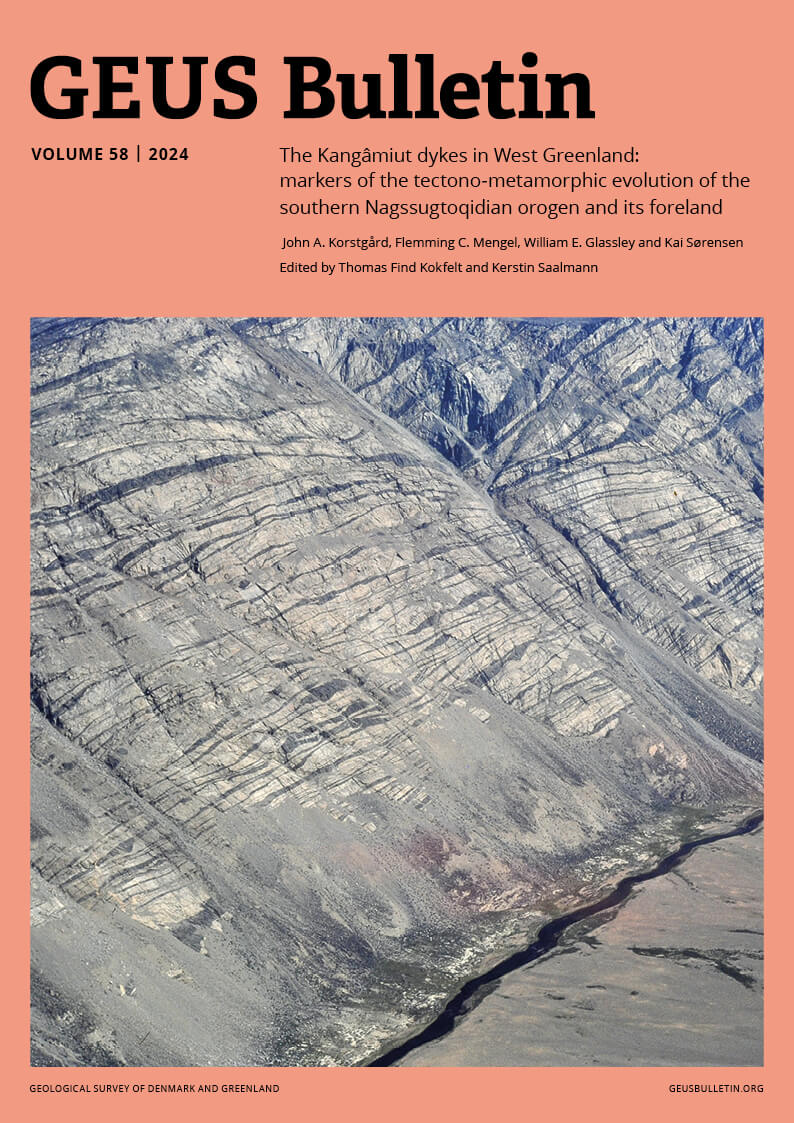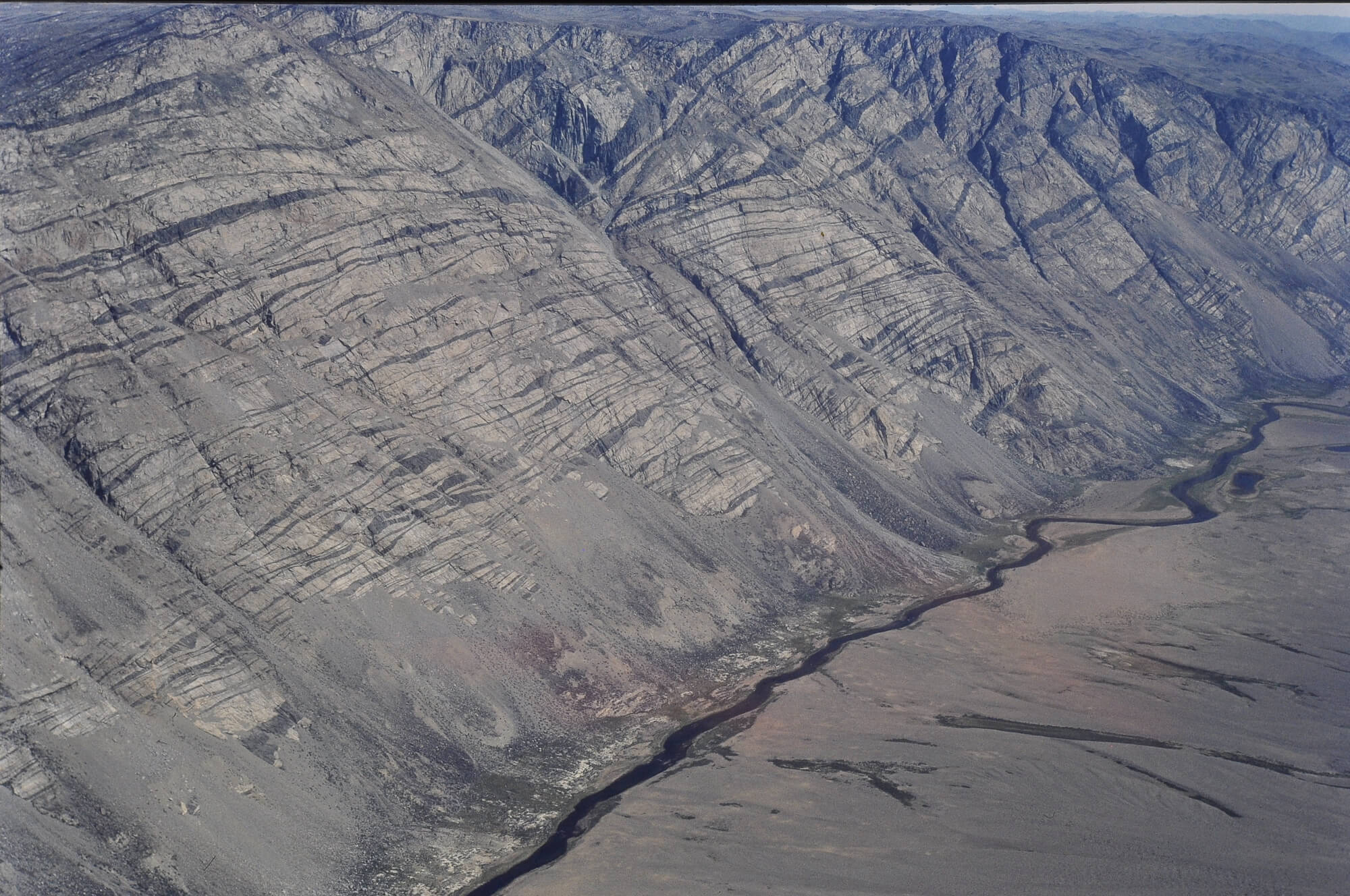The Kangâmiut dykes in West Greenland: markers of the tectono-metamorphic evolution of the southern Nagssugtoqidian orogen and its foreland
Authors: John A. Korstgård, Flemming C. Mengel, William E. Glassley and Kai Sørensen
Editors: Thomas F. Kokfelt (GEUS, Denmark) and Kerstin Saalmann (NGU, Norway)
The structural evolution of the southern Nagssugtoqidian orogen of West Greenland was first described by Hans Ramberg based on the deformation of the regional Kangâmiut dyke swarm. These dykes form a boundary zone marked by the transition from undeformed, discordant dykes in the south to highly deformed dykes and host rocks to the north. In this special issue of GEUS Bulletin, the authors present a comprehensive analysis of dykes and host rocks in the southern Nagssugtoqidian orogen and its southern foreland. This compilation of new and published data covers the area from Sisimiut in the north to Alanngua, south of Maniitsoq. Key findings reveal the compositional homogeneity of the Kangâmiut dykes that have geochemical similarities to basalts in tectonic rift environments. They report consistent intrusive ages of c. 2035 Ma and uneven metamorphic overprints between Maniitsoq and Itillip Ilua, a consistent structural and metamorphic gradient between Itillip Ilua and Ikertooq and a bimodal distribution of ages for metamorphic and structural overprints on the dykes. Pressure-temperature and age data suggest that the metamorphic overprints in the southern part were generated during an 1850–1800 Ma thermotectonic event, which was likely overprinted by a subsequent event at 1780–1720 Ma in the Ikertooq – Itillip Ilua area.






